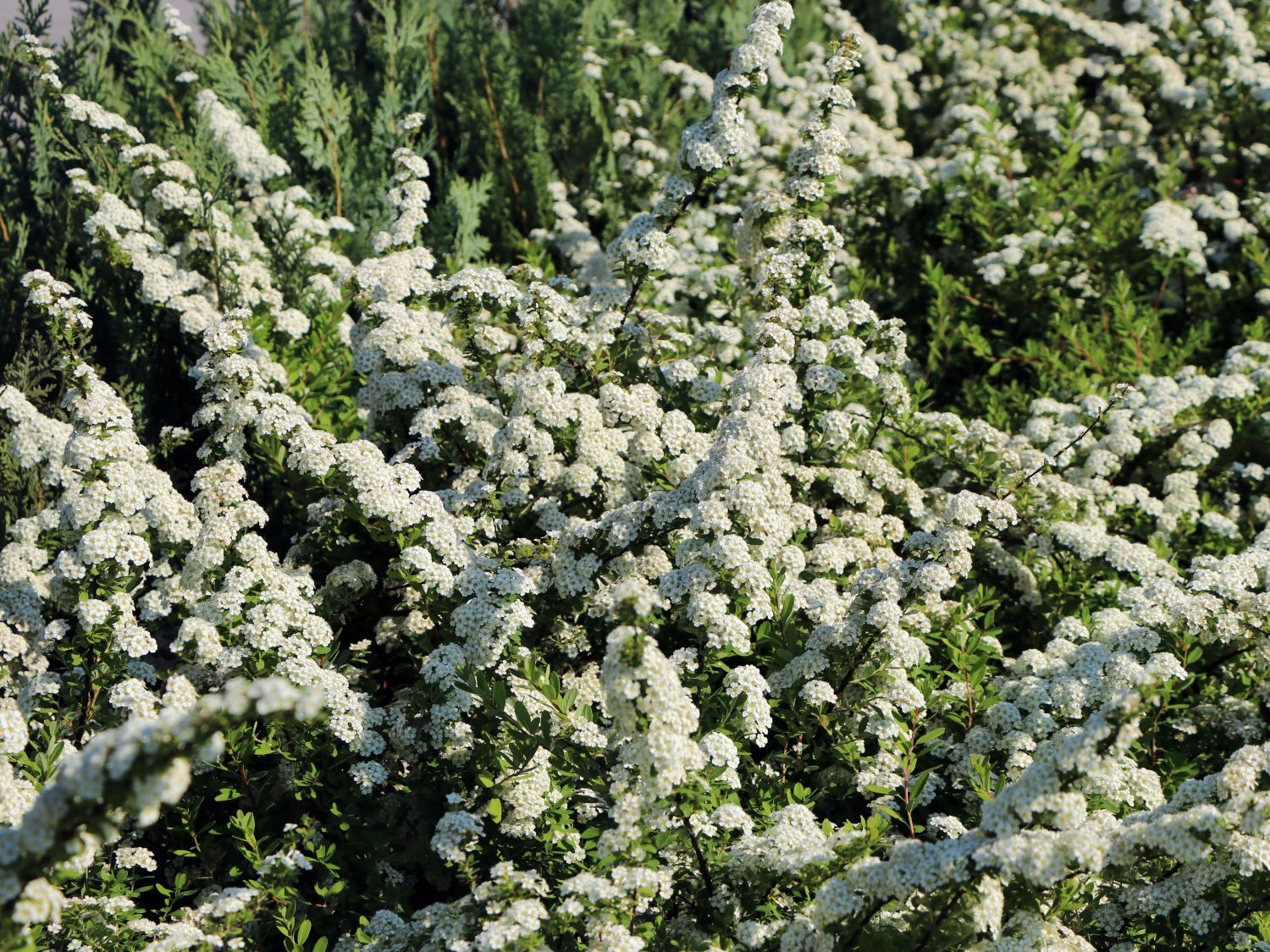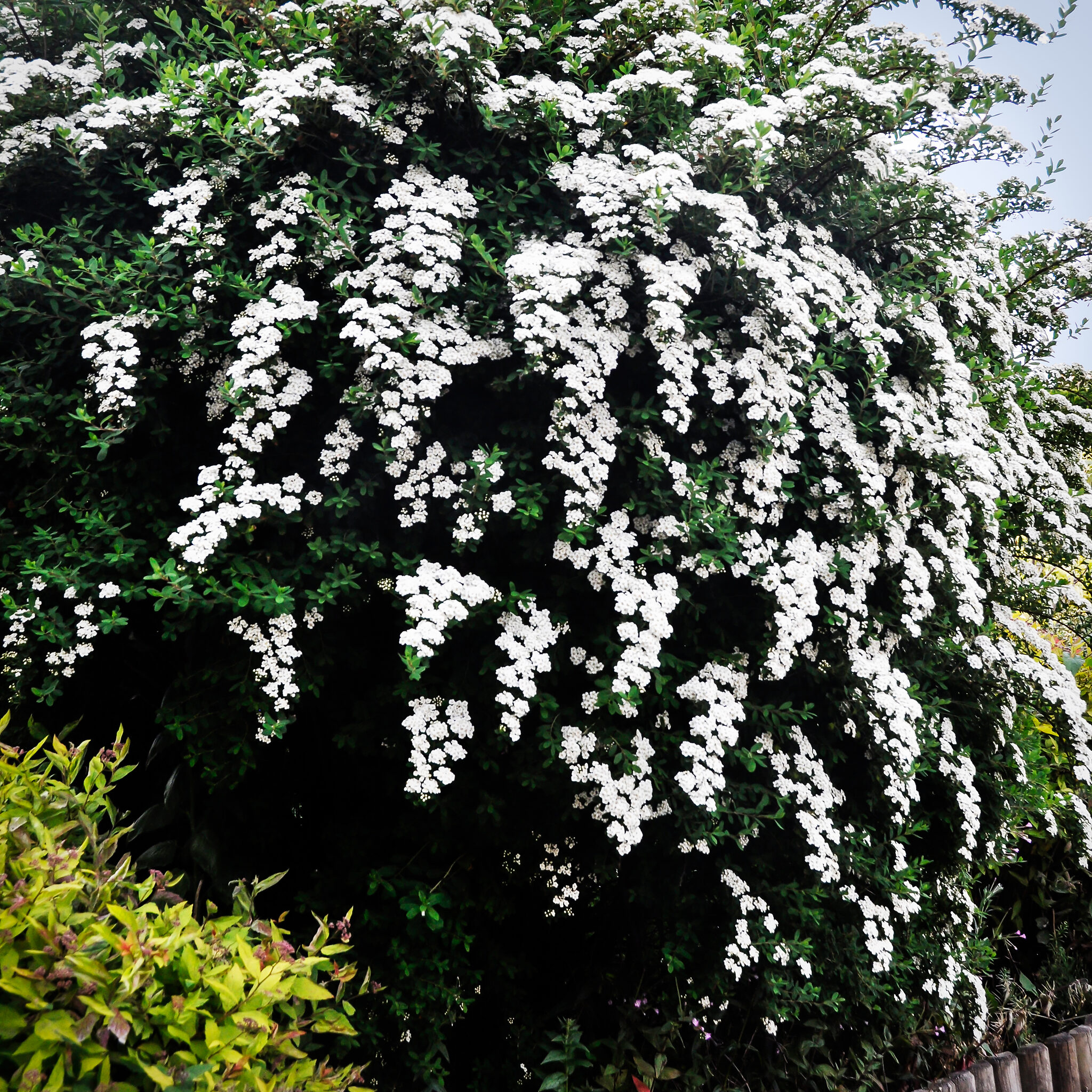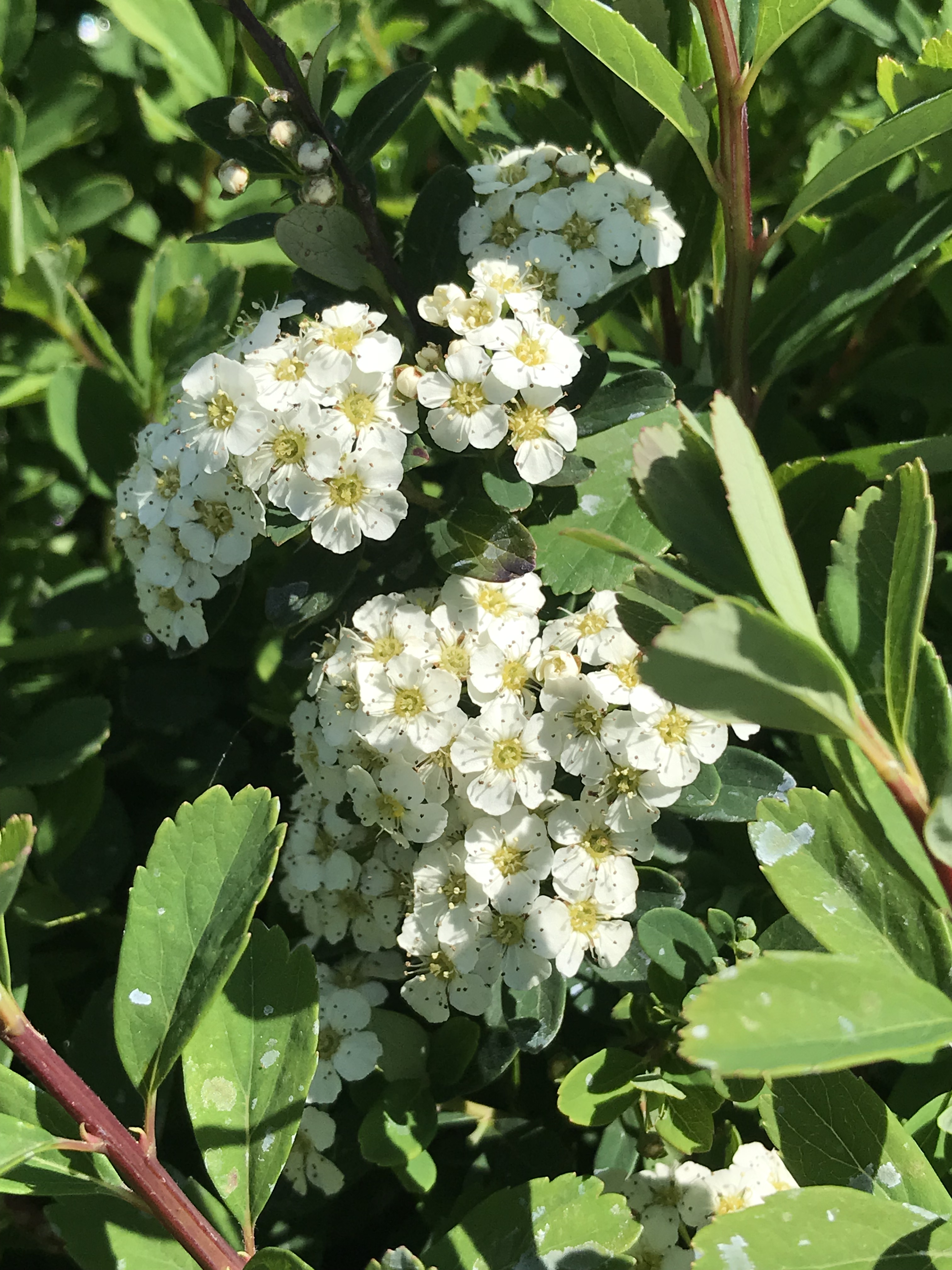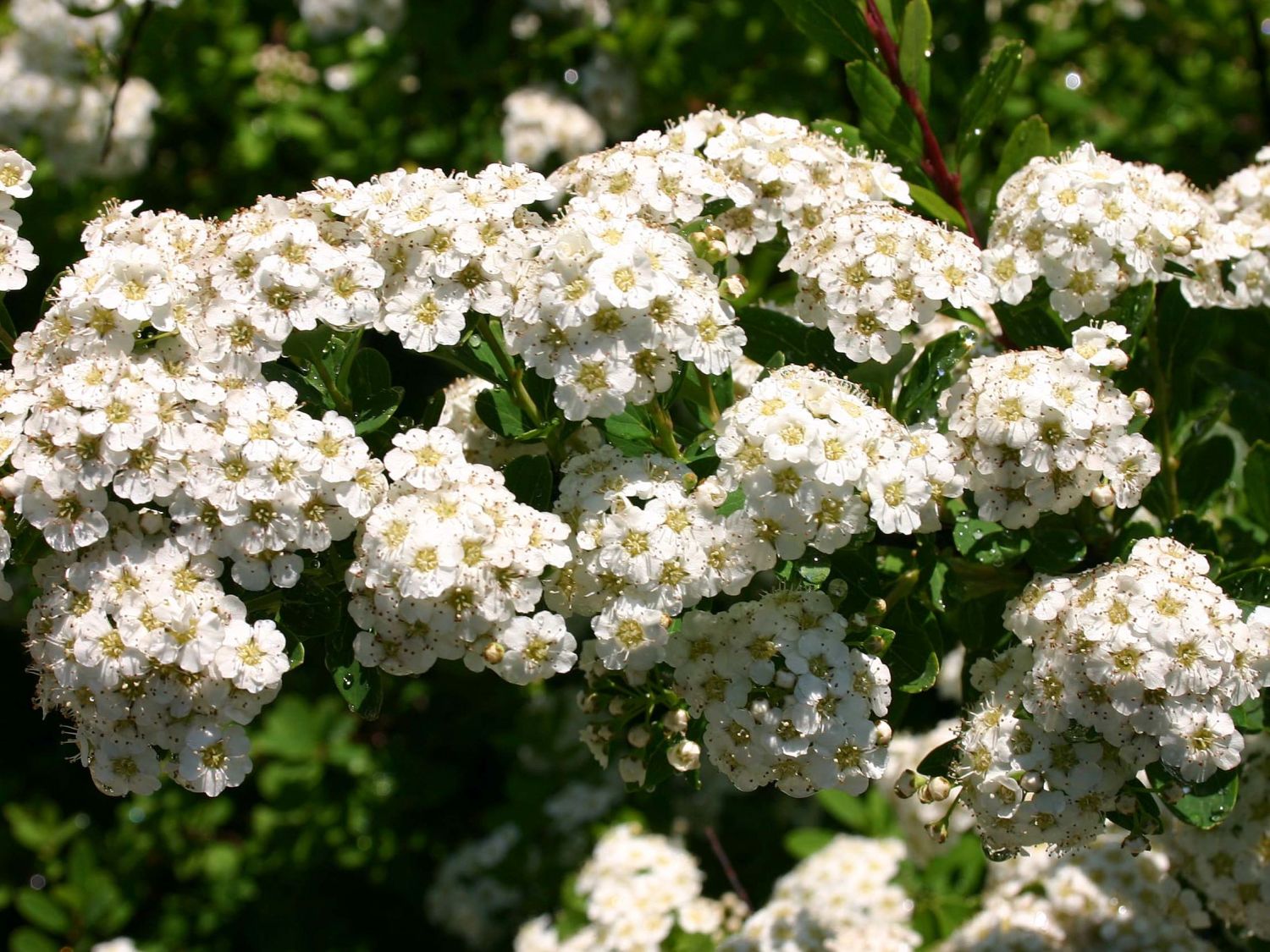
Common Name Spiraea nipponica 'Snowmound'
Snowmound Spirea will grow to be about 4 feet tall at maturity, with a spread of 4 feet. It tends to fill out right to the ground and therefore doesn't necessarily require facer plants in front. It grows at a fast rate, and under ideal conditions can be expected to live for approximately 20 years.

Japanische Strauchspiere 'Snowmound' Spiraea nipponica 'Snowmound' Baumschule Horstmann
Spiraea nipponica 'Snowmound' Pronunciation: spy-REE-a nip-PON-i-ka SKU #07130 4-8 Your climate might be too cold for this plant: Change Location Find In Store OVERVIEW DETAILS STYLE CARE This Plant's Growing Zones: 4-8 Your USDA Cold Hardiness Zone: Your climate may be too cold for this plant Change Location Be Inspired

Spiraea nipponica 'Snowmound' Spirea 2 Wagon Wheel
Snowmound spirea is a flowering shrub that is native to East Asia. It is a popular plant in gardens and landscapes due to its showy white flowers that bloom in late spring or early summer. Snowmound spirea is a deciduous shrub, meaning it will lose its leaves in the fall. The leaves are ovate, or egg-shaped, and have toothed margins. The flowers are borne in clusters of 4-9 and are each about.

Spiraea nipponica 'Snowmound' (Strauchspiere 'Snowmound')
Description: Snowmound spirea has branches that will gracefully arch. It is low-maintenance but can be pruned into a shape you prefer. The dense, blue-green foliage changes to a copper-yellow. Pure white clusters of flowers bloom in May, almost completely covering the branches. This shrub has no major pests or diseases.

SPIRAEA nipponica 'Snowmound' / Snowmound Spirea Paramount Nursery Inc.
The Spiraea nipponica 'Snowmound' is ready to deliver. With its mid to late-spring show, this shrub is an excellent bloomer. Many designers use this spirea as a substitute for the larger Bridal Wreath spirea. This spirea is tight and more compact, and it features a beautiful arching habit.

Spiraea nipponica 'Snowmound' spiraea Идеи посадки растений, Кустарники, Озеленение двора
Spirea Nipponica Snowmound, otherwise known as "Snowmound Spirea,'' is a beautiful shrub with gorgeous drooping flowers that'll add a romantic feel to your outdoor space! Contrasted with the dark, green foliage, the multi-bloom flowers bloom from mid to late May.

Snowmound Spirea For Sale The Tree Center
Spiraea nipponica, or Snowmound Spiraea, is a drought-tolerant, flowering, deciduous shrub growing rapidly to its full size. For most Spiraea species, the height can range from 5 to 8 feet high and an equal spread; however, Snowmound tends to be a bit smaller with a 2 to 4 foot height.

SPIRAEA nipponica 'Snowmound' emerisa gardens
Nippon spirea (Spiraea nipponica). Nippon spirea, commonly known as snowmound spirea, is a relatively smaller, upright, mounded shrub. It reaches 4 to 5 feet tall and wide. Look for a late spring frothy shower of clustered, small, white flowers. They cover the limbs like a mound of snow followed by signature deep blue-green leaves during the.

Spiraea nipponica 'Snowmound' Multiplants
Spiraea nipponica, commonly called spirea, is a dense, upright, mounded, deciduous shrub that typically matures to 5-8' tall with a slightly larger spread. It is native to the island of Shikoku, Japan. Obovate to elliptic leaves (to 1 1/4" long) are dark green above but blue-green beneath with round toothed apices.

Spiraea nipponica 'Snowmound' Spierstruik De Tuinen van Appeltern
When space is tight, but you want a showy shrub to decorate your landscape, try compact Snowmound Spirea (Spiraea nipponica 'Snowmound'). This dwarf, ornamental shrub has a lot of wonderful features.. From the laden flowers in mid to late spring to the fabulous fall color- you'll fall in love with the Snowmound Spirea.Garden designers use this variety as a substitute for old-fashioned Bridal.

Japanische Strauchspiere 'Snowmound' Spiraea nipponica 'Snowmound' Baumschule Horstmann
Spirea is a good plant to use for hedging, for privacy lines, as a background for showier flowers, or massed along a sloping part of your yard for erosion control. How and When to Plant Spirea Dig a hole where you want to plant a spirea shrub the same height as the root ball and two to three times wider than the roots.

Spiraea nipponica 'Snowmound' 10L Pot Hedges Direct
Spiraea nipponica 'Snowmound' Tosa spiraea 'Snowmound' 'Snowmound' is a spreading medium-sized deciduous shrub with arching branches bearing small obovate leaves and short lateral shoots ending in rounded clusters, to 4cm in width, of small white flowers Synonyms Spiraea 'Snowmound' Spiraea nipponica var. tosaensis misapplied Join the RHS

Spiraea nipponica 'Snowmound' Worfield Plants
Nippon spirea ( Spiraea nipponica ), also known as snowmound Nippon spirea, has an upright cascading habit, snow-white flowers and blue-green foliage that turns yellow in fall. TRY THESE PROVEN WINNERS ® VARIETIES Spirea comes in a range of forms, flower and foliage colors.

Snowmound Spirea is a late spring to early summer flowering shrub.
Spiraea nipponica 'Snowmound' Common name: Snowmound Spirea Pronunciation: sp-i-REE-a nip-PON-i-ka Family: Rosaceae Genus: Spiraea Synonyms: S. n. var. tosaensis 'Snowmound' Type: Broadleaf Native to (or naturalized in) Oregon: No Deciduous shrub, 3-5 ft (0.9-1.5 m) tall, equal width, upright, rigid form, rounded.

Buy Spirea Nipponskaya Snowmound in a container in Kiev. Spirea seedlings Spiraea nipponica
Snowmound Spirea. Snowmound spirea is by far the most popular cultivar of Spiraea nipponica. It has a neat, dense habit and produces abundant white blooms along arching branches in June. The genus Spiraea consists of small to medium sized flowering shrubs with a fine-textured twiggy mounding habit. The small simple leaves are generally lance.

Spiraea nipponica Snowmound Spirée du Japon, élégante et blanche
Fruit Color Brown. Mature Plant Size (H x W) 4-5' x 4-5'. Snowmound Spirea is a graceful and elegant compact shrub. Its foliage is thick and blue-green in appearance. White flowers occur in late spring to early summer and completely cover the plant on the prior year's wood. The leaves turn from dark blue-green to an attractive pale yellow in fall.